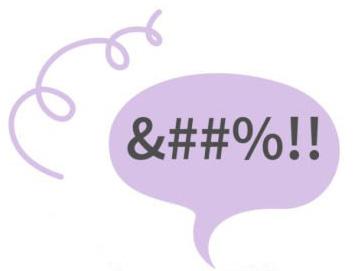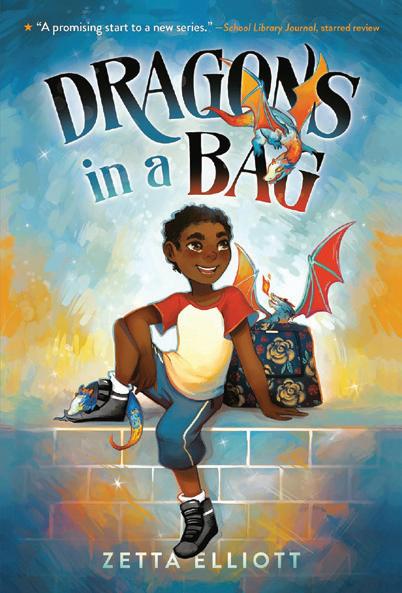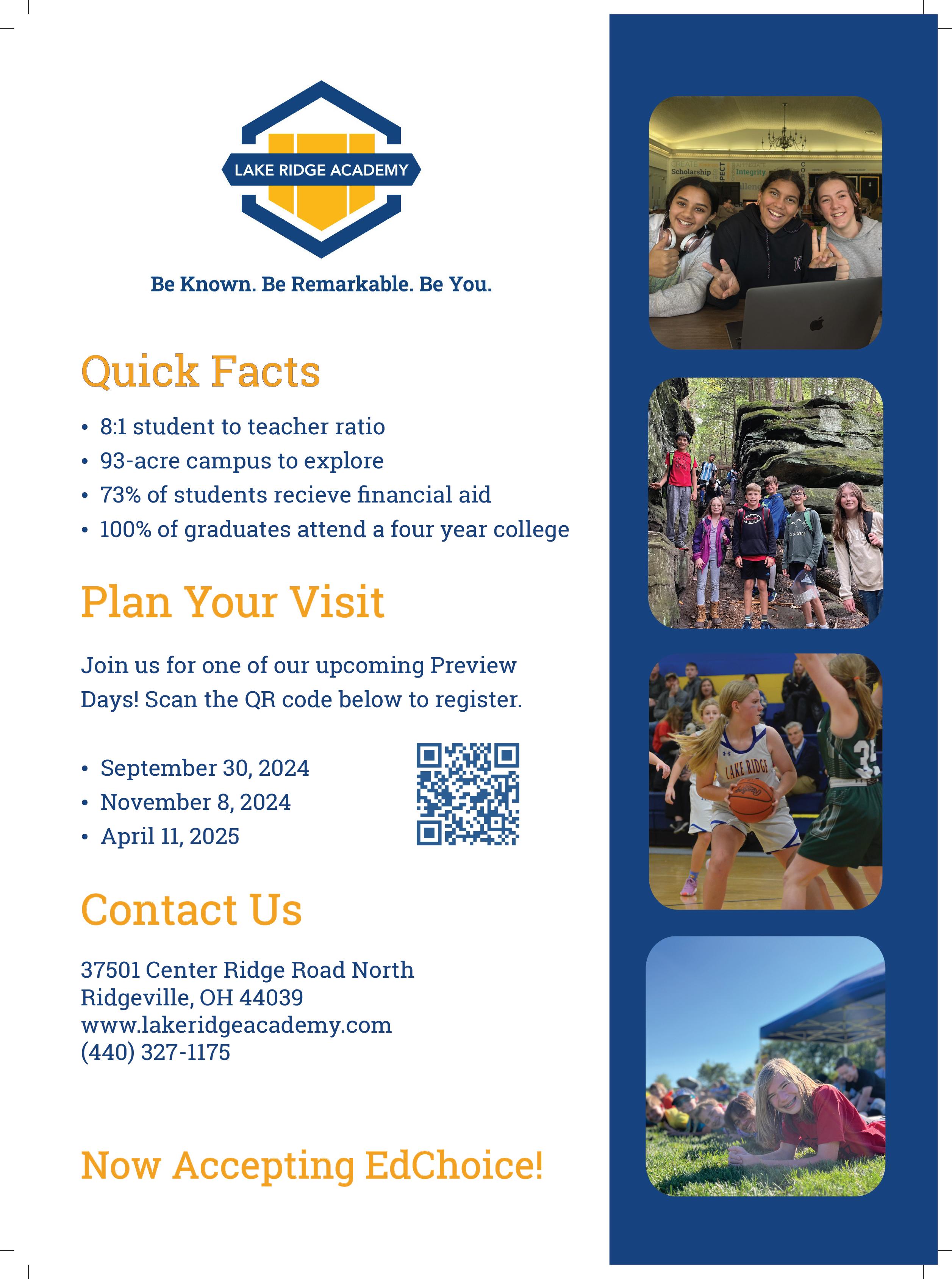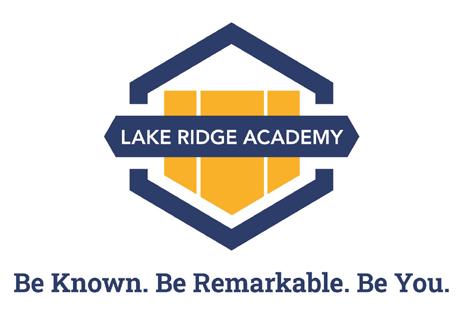





By Erin Sernoffsky
Middle school gets a bad rap. Movies, books, TV shows, even family stories paint a bleak picture of bullies and demanding teachers. While middle school years can be incredibly difficult for some, it’s also an exciting time where students can expand their world, try their hand at new things.
“Middle school is so much fun and there are so many new opportunities for kids,” says Maria Enourato, guidance counselor at Avon Middle School. “It is a time for discovery and exploration that can be filled with great experiences.”
For students who are new to middle school, helping them to make a smooth transition makes a difference so they can take advantage of what these years have to offer.
Anxiety for most middle schoolers generally falls into two categories—adjusting to new academic expectations, and finding a sense of belonging in their school and with their peers.
“The biggest areas of struggle for kids is organization and a sense of belonging,” Enourato says. “This is typically the first time when students
switch classes for every subject and staying organized is an issue. Middle school is also a time where friend groups may change… They get to meet new people and sometimes there are adjustments to their friend groups.”
Michelle Winchell of Copley saw this play out as she helped her daughter Monroe prepare to enter Copley Fairlawn Middle School. Monroe was excited to start at her new school and looked forward to having her own locker, switching classes, new friends and activities, but even so, worries crept in.
“Like many students, Monroe was concerned about not having classes or recess with her old friends and worried about not making new ones,” Michelle recalls. “It’s hard to get to know others when you’re in classes all day. She was also stressed about incoming homework because she knew she would have more than ever before.”
These feelings are incredibly common among students everywhere, and at Copley Fairlawn Middle School, it inspired Joshua Harris, language arts teacher to introduce the WEB Leadership program to the building. This mentorship program pairs eighth-
grade leaders with groups of incoming fifth graders to show them the ropes of their new school, guide them throughout the year, and help with everything from opening their lockers, to developing study skills, to lessons on how to be a good friend.
“When fifth graders come to orientation, the first person they talk to, the first one to give them an in-depth talk about what it means to be in middle school, is a WEB Leader,” Harris says. “These leaders can do something that I can’t do, or that any teacher or counselor or principal can’t do. They can look at these fifth graders and tell them, ‘I get it. I understand what you’re going through because I was just there and here’s how I dealt with it.’ Belonging means something different now than when I was their age, and these eighth graders get it better than I can.”
This peer-to-peer influence is something Enourato sees in her school as well. While school counselors are actively involved in helping kids settle into their new school, she knows fellow students play a huge role in making their community welcoming.

“School counselors are always available to help with the transition as well, academically and socially,” she says. “There are a lot of different things we do behind the scenes to help students even before they enter our building. Parents can also reach out to any older kids they may know that have been through to ask for advice. Kids will more likely take advice from a peer.”
Enourato also emphasizes how important getting involved in school activities is to fostering that sense of belonging and connection middle schoolers crave.
“Extracurriculars are super important at this age,” she says. “They allow students an outlet to be carefree and have fun. It gives them a sense of belonging as they are part of a team or group that has similar interests. It gives them an opportunity to learn about teamwork, and meet new people. It also helps teach kids to manage their time better. Students that are involved in activities tend to prioritize what needs to be done more efficiently.”
Learning how to prioritize and in-
dependently manage work is a critical skill for middle schoolers, and parents play a key role helping kids build good study habits.
“Parents need to make sure they set up regular after school routines that help support academic success, such as checking homework agendas, having a quiet workspace, and great time management,” Enuarto says. “Setting these routines earlier in the school year will allow parents to step back once their child has it down.”
These routines are different for every student and finding the right one takes some trial and error. For Winchell, it also included finding creative ways to reinforce what Monroe is learning.
“Monroe’s routine included decompressing by grabbing a snack and watching a quick show then turning on some music and tackling her homework,” she says. “Monroe also found it was helpful to watch movies or documentaries around topics she was learning about in school.”
However, when school work begins to feel stressful, or parents suspect bullying, it’s important to remember
there are always people at school who care and want to help, whether that’s peer mentors, teachers, or guidance counselors.
“School counselors are always available to help with the transition as well, academically and socially,” Enourato says. She, and professionals like her, are ready and available for kids and parents alike.
“I think it’s important to help students understand the counselor’s role in school,” Winchell adds. “They should be encouraged to get to know their counselor and feel welcome to talk about anything anytime and get the support they need.”
Middle school is full of change and challenges, but kids have an amazing chance to invest in themselves and their school. Finding ways to get involved, to foster a sense of belonging, and to build organizational skills for a strong academic foundation will all go a long way to making middle school a positive experience.











By Joel Hammond
Your happy elementary school student suddenly becomes a tween in middle school. It’s no secret to parents that during those years, your child will see a lot of changes, not just academically, but also emotionally and physically.
“Due to the enormous changes in their brain development at this stage, it is totally normal for us to see a sharp increase in the intensity of their emotional experiences, expressed in both the highs and the lows being much more pronounced,” says Emily Geier, a licensed social worker at the Shaker Heights City School District. “It’s not so much that their ‘hormones are raging,’ as it is that their brains are becoming much more complex in the emotional and social realms.”
Also, middle schoolers’ priorities are changing, Geier says. Increased independence and social connection with peers are becoming their main drivers, and while that entails a separation of various intensity from parents and guardians, that separation does not mean they don’t still need those grownups. Parents and guardians shouldn’t take that separation as personal rejection, but rather maintain a steady presence with them.
Geier provided seven other tips for parents to consider when navigating this changing emotional time for this age group:
LISTEN AND EMPATHIZE. “We want them to know we believe in their ability to face obstacles and make healthy decisions,” Geier says. By listening and refraining from jumping in with advice, we show children we aren’t taking away their agency to manage discomfort or stress.
SHOW THEM OUR APPRECIATION FOR INDEPENDENCE AND DISPLAYS OF CHARACTER. “Add frequent expressions of delight in them and appreciation for who they are, just as they are,” Geier says. “Without impulsively jumping in to save them, our kids then grow in confidence, autonomy and sense of resilience.”
APOLOGIZE. Oh, this is a tough one, isn’t it? Your authority will not dissipate if you expose the weakness of being wrong. “Admitting fault does not give our child power over us. Quite the opposite is true. We model strength and the true power that comes from admitting and learning from mistakes,” she says.
TAKE THE GAME ON THE ROAD. Sometimes, early teens view true face-to-face conversations — in their bedrooms, at the kitchen table — as intimidating. Geier suggests moving the conversation to a more relaxing place. “Taking a drive, walking the dog, hiking in nature, baking their favorite goodies together, or watching a favorite show with them are examples of circumstances where they might feel less anxious, embarrassed or pressured,” she says.
EMBRACE DIGITAL COMMUNICATION. Yes, there are well-founded concerns about cell phones and digital communication among middle school students. But, meeting them where they are helps. “Texting with our teens can help foster more openness. It relieves the pressure of face-to-face interactions where they are compelled to come up with an answer to our questions right away,” Geier says.
LEAVE THE LIGHT ON. Yes, just like Motel 6, Geier points out. Give them space but find ways to let them know you’ll be there when they need you. “If and when they do share some of the ‘messy’ things happening in their lives, it helps not to rehash and harp on what we feel were mistakes or bad decisions that are now in the past, but instead to move forward as a supporter of problem solving and solutions for repairing and coping.”
DEVELOP A SUPPORT NETWORK WITH OTHER PARENTS. You’re not alone in this perceived “battle.” “This can be a time of increased feelings of isolation and anxiety, but we can find enormous relief and a huge benefit in authentic connection with other people on the same journey,” Geier says. “Many times parents feel awkward or embarrassed to share what’s actually happening and how it feels, but this is often replaced by the reassuring recognition that we are not alone.”
By Rachel Abbey McCafferty
Next school year, Ohio students might find themselves in a pre-Y2K throwback: a classroom without cellphones or very limited use.
In May, Gov. Mike DeWine signed House Bill 250 into law, requiring Ohio school districts to create official cellphone policies. While the law leaves the specifics up to each district, the goal is to decrease the amount of time students use their phones during school.
“Local school districts will create the policies that work best in their environments and for their students, but the core mission of this bill is clear: minimize screen time during school time,” DeWine said in a news release. “Not only is this time precious for the educational development of our children, but we also have a responsibility to safeguard our kids from the nonstop barrage of alerts from the internet and social media that have been proven to be damaging to their mental health.”
Ohio Lt. Gov. Jon Husted said using smartphones in schools can lead to lower academic performance, more disciplinary issues and increased bullying. As the father to teenagers, the issue is close to his heart.
When he began holding statewide forums to talk to academic leaders about cellphone use in schools, he expected some pushback. He didn’t get much. Instead, leaders whose schools had already limited cellphones reported both improved academic performance and a more social school culture.
The Ohio Education Association, which represents teachers and support professionals across the state’s schools, supports efforts to limit cellphone use in the classroom, according to Scott DiMauro, president of Ohio Education Association. Members from districts that had already limited cellphone use reported that students were “more engaged in class,” he adds, as well as more social outside of it.
Following the passage of HB 250, OEA adopted a resolution in May on the use of personal electronic devices.
“The Ohio Education Association believes that the unrestricted use of cellphones and other personal electronic devices in classrooms and other academic areas detracts from the educational environment, reduces the efficacy of teaching and learning, distracts students, facilitates cyberbullying and other harms, and undermines the educational mission of schools,” the resolution reads.
It’s not just teachers and administrators pushing for change.
Husted said students and parents see the harm in the constant “tech infringement,” too, but it’s difficult to say no to the notifications when everyone else is checking their phone.
“But if nobody’s doing it, then you’ve leveled the playing field and people are like, ‘yes, thank you,’” he says.
One concern he has heard from parents is that they want a way to reach their children in the case of a crisis.
Parents can still contact students through a front office, he says. And in the case of a widespread emergency, like a school shooting, law enforcement cautions against so many people trying to use their phones at the same time anyway. That can overwhelm the system or spread misinformation.
School districts have until July 2025 to finalize their policies.
Husted is hoping many embrace the model policy the state has created, which would prohibit students from using cellphones at any time during school hours, barring exceptions for needs outlined in individualized education programs or similar plans, or for monitoring health concerns. The model policy also includes options for discipline when the policy is violated, ranging from a verbal warning to confiscation of the phone, requiring a guardian to pick it up.
Many districts have had policies in the past that left cellphone use up to individual teachers, making enforcement of rules “virtually impossible,” DiMauro says. It’s going to be important to have “clear guidance” and communication, he said, as well as
policies that are applied and enforced consistently.
Overall, the association hopes teachers get a voice in the decision-making process as districts are creating cellphone policies, and that districts craft policies with the ability to accommodate students who do need access to devices or teachers who want to occasionally incorporate personal tech into lessons.

Though cellphones may not be banned at all schools in Ohio, chances are good parents are looking for ways to help children and teens unplug a bit, particularly during class. Common Sense Media, a nonprofit focused on helping parents navigate entertainment, media and technology, found that about half of kids in the U.S. have a smartphone by age 11. The organization has some tips for parents who want to help their children use those phones responsibly in and out of the classroom: Consider setting time limits on apps or restricting notifications, so
children aren’t as easily distracted. Share expectations on cellphone use at school, and encourage children and teens to use it as little as possible there, keeping it for things like calling or texting for a ride home. Parents, unless it’s an emergency, refrain from texting kids at school. At home, parents can model the cellphone behavior they want children and teens to see, like putting the phone down in the car and making time for face-to-face conversations. And charging cellphones in a common space at night gives everyone time away from their device.





With so many distractions — phones, online games and social media — it might be difficult to get some tweens to sit down and read. Here are a few tips to encourage them to uncover new reading adventures that are age appropriate for them.
Read Books Together. Help your tween to read by exploring books together. After both of you read the same book, have a discussion about likes and dislikes.
A Place to Read. Have a spot in your house where you and your family can enjoy books and discover new ones. Have books or magazines around your home or keep the bookshelves near a comfy, quiet family reading space.
Make the Library a Habit. The library (or bookstore) provides opportunities to get engaged with many different authors and reading material. Have a plan to visit often with your tween to get them familiar with the process of choosing books.
Online and Audiobooks. With most kids on their screens, help them to download apps to help them read online or listen to different authors. If they haven’t tried audio or online books, read books online together or listen to an audiobook on the way to school or other activities.
GHOST BOOK
By Remy Lai
When July saves a boy ghost from being devoured by a hungry ghost, he becomes her first ever friend. Except William is not a ghost. He’s a wandering soul wavering between life and death and the new friends embark on an adventure to return William to his body.
GAMER by Chris Bradford
Street kid Scott jumps at the chance to be a virtual kombat gamer. If he can battle his way up the ranks, the ultimate prize will be his. But then his friend Kate goes missing in the battle arena, and Scott’s dream turns into a nightmare.
ATTACK OF THE BLACK RECTANGLES by A.
S. King
When Mac first opens his classroom copy of Jane Yolen’s The Devil’s Arithmetic and finds some words blacked out, he thinks it must be a mistake. But then when he and his friends discover what the missing words are, he’s outraged. Someone in his school is trying to prevent kids from reading the full story. But who?
By Angela Gartner

DRAGONS IN A BAG
by Zetta Elliott and illustrated by Geneva B
When Jaxon is sent to spend the day with a mean old lady his mother calls Ma, he finds out she’s not his grandmother, she is a witch! She needs his help delivering baby dragons to a magical world where they’ll be safe. There are two rules when it comes to the dragons: don’t let them out of the bag, and don’t feed them anything sweet. Before he knows it, Jax and his friends Vikram and Kavita have broken both rules! Will Jax get the baby dragons delivered safe and sound? Or will they be lost in Brooklyn forever?
by Lynda Mullaly Hunt
Ally has been smart enough to fool a lot of smart people. Every time she lands in a new school, she is able to hide her inability to read by creating clever yet disruptive distractions. Her newest teacher Mr. Daniels sees the bright, creative kid underneath the trouble maker. With his help, Ally learns not to be so hard on herself and that dyslexia is nothing to be ashamed of. As her confidence grows, Ally feels free to be herself and the world starts opening up with possibilities.


by Jerry Craft,
NEW KID
and illustrated by Jerry
Craft
It’s not easy being the new kid, especially when you don’t look like everyone else. This instant classic middle grade graphic novel is about existing in two worlds and not belonging in either. It’s the story of finding yourself so that others can find you too.
by Kekla Magoon
Since Grandpa died, Dally’s days are dull and restricted. She’s eleven and a half years old, and her exacting single mother is already preparing her to take over the family business. Starved for adventure and release, Dally rescues a mysterious envelope from her mother’s clutches, an envelope Grandpa had earmarked for her. The map she finds inside leads straight to an ancient vault, a library of secrets where each book is a portal to a precise moment in time. As Dally “checks out” adventure after adventure—including an exhilarating outing with pirates—she begins to dive deep into her family’s hidden history.




As an independent and Catholic school, Gilmour Academy is uniquely able to develop the minds and hearts of its students. Gilmour’s identity as an independent school reflects a commitment to rigorous academic programming, smaller classes and a variety of real-world opportunities. Gilmour’s Catholic identity means students are learning in an environment that is inclusive, thought-provoking and rooted in the Holy
Cross tradition. Gilmour empowers students of all faiths to grow spiritually. Through its comprehensive curriculum, faith-based tradition, commitment to service and emphasis on leadership, Gilmour educates the whole person. gilmour.org

Hawken’s Middle School program focuses
on building strong academic skills while
placing an increasing emphasis on personal responsibility. They partner with parents to ensure that students receive the optimal balance of structure, freedom, nurture and support that will enable them to successfully navigate this exciting and challenging transition into adolescence. With an emphasis on hands-on learning, interdisciplinary approaches, and student choice, students become active participants in their education as they immerse themselves in the process of learning and discovery. hawken. edu/admission. Call or email admissions@ hawken.edu, 440-423-2950.



Lake Ridge Academy is the only independent college preparatory school on Cleveland’s west side. Their K-12 co-educational curriculum offers a unique blend of rigorous academics, extracurricular activities, and a focus on wellness and character development. With a student-teacher ratio of 8:1, their devoted faculty provides personalized attention to help every student thrive. Come visit their 93-acre campus and see the Lake Ridge difference. Their next preview day is September 30. Register at lakeridgeacademy. org/admissions/visit.

Our Lady of the Elms offers an all-girls, faith-based education for grades 1-12, with a co-ed preschool and kindergarten. Small class sizes create a nurturing environment where students are empowered to reach their full potential and lead lives of faith and integrity. Committed to fostering leadership and a spirit of service, the Elms prepares students to make a positive impact on the world. Learn more at theelms.org.

Ruffing Montessori School in Cleveland Heights is more than just a school for children ages 18 months through eighth grade. It is a beloved community where children are guided by experienced Montessori-trained teachers and immersed in a rigorous curriculum that prepares students to become independent thinkers and creative problem solvers. Schedule your tour today by contacting the admissions office at 216-321-7571 and see why Ruffing is the compelling school of choice for so many. ruffingmontessori.net

St. Hilary School in Fairlawn serves students in grades K-8 in a faith-based environment with a curriculum that challenges and accommodates diverse learning abilities. The average student-teacher ratio is 20:1. Special offerings include Spanish, French, Chinese, religion, art, music, physical education, technology, advanced math and enrichment opportunities. Many extracurricular activities, as well as auxiliary, remedial, clinic, lunch and extended care services are available. 645 Moorfield Road, Fairlawn, 330-867-8720, ext. 343, st-hilaryschool.org

St. Paul Westlake Middle School offers an academic program that emphasizes a respect for diverse learning styles, team and interdisciplinary teaching, and varied experiences with cooperative learning, research and group presentations. Our teachers create opportunities for cognitive growth while incorporating exploratory experiences for enrichment, as they prepare students for a smooth transition to high school and beyond. Contact admissions@stpaulwest lake.org or visit stpaulwestlake.school


By Ginny McCabe
There are a number of programs and resources throughout the Northeast Ohio area that support kids with special needs by embracing their individuality with personalized attention and tailored programs through art.
For example, according to the Cleveland Clinic, music therapy provides benefits in a child’s development from behavior, emotion and learning, which can regulate moods, reduce stress, build self-confidence and improve language and coordination skills.
“Therapies can help kids work through things like attention to a task, or pre-reading skills. Kids can also apply some of the general skills they learn to everyday living such as sitting at the table, or going to Boy Scouts, or church functions,” says Ed Gallagher, vice president for education at Beck Center for the Arts, which provides a creative arts therapies program, from music therapy, art therapy, and adaptive arts programming in dance,
music, theater, and visual arts.
And with the additional therapies available from other agencies and organizations, it often works alongside adaptive arts.
“The great thing about music therapy is we can work in tandem with other therapies like speech therapy, or occupational, or physical therapy,” says Andrea Vallejo Wead, director of the Center for Music Therapy at The Music Settlement. “Our therapists will work with each client to determine their needs, and how we can best help them based on what the parents are requesting, or if they have an IEP, we can also address items in that, and we determine their likes. We have goals that we work towards, and we accomplish those goals and objectives by using our clients’ interests.”
“At the end of the day, it’s all
about the person we serve, and making sure they are moving forward with whatever area they need to move forward with,” Gallagher adds. “There’s something for everybody out there.”



Geared toward children and adults with disabilities, Beck Center’s Creative Arts Therapies program was founded in 1994. Each week, Beck Center therapists serve over 1,500 individuals onsite, and in over 30 organizations across the region. Services are provided to schools, social service agencies, medical facilities, retirement communities, and more. Beck Center provides Music and Art, as well as adapted programming in music, theater, and the visual arts. Using art, dance/movement, theater and music as a therapeutic tool, individuals can address communication, academic, motor, emotional, and social skills as well as develop talents in the fine arts. Participants receive individualized attention with personally designed goals, tailored to meet their own needs. Financial aid may be available to those who qualify. Visit beckcenter.org, or call 216-521-2540 for more info.
The Ohio Department of Developmental Disabilities (DODD) oversees a statewide system of services that supports over 100,000 people with developmental disabilities, their families, and support teams. In Ohio, services and supports, as well as eligibility determinations, are all managed at the county level by providing assessment, service planning, and coordination to adults and children with developmental disabilities, as well as oversight and assistance to service providers. Find your county board at dodd.ohio.gov
The Fine Arts Association offers virtual and/or in-person group and individual services in both music and art therapies along with adapted programming and specialized workshops. They partner with several organizations to enrich others through the arts. Off-site services are available to preschools, private/public schools, nursing homes, hospitals and other community-based agencies in Lake, Geauga and Ashtabula counties. Whether for a group or individual session, services are tailored to the specific needs of the agency. Call 440- 951-7500 or visit fineartsassociation.org/education/therapy
Hearts For Music is a 501(c)(3) non-profit organization created to provide opportunities and avenues for individuals with special needs. Youth can pursue their love for creating and performing music in a professional ensemble setting. Hearts for Music is an orchestra made up of 20 to 25 children and/or young adults with a variety of special needs, such as Down’s syndrome or autism. Call 330-298-5549, or connect online at heartsformusic.org
Approved as a clinical training site by the American Music Therapy Association, The Music Settlement and its program leaders serve as a resource for therapists and educators across the country. Private and group sessions led by dedicated board-certified music therapists are offered both on-and-off site. Therapists deliver innovative, research-based music therapy experiences, which have helped thousands of individuals in the community. The Music Settlement serves people of all ages with disabilities and/or health concerns. Music Therapy Musical Revue is available for teens and adults, ages 15 and up. The program includes warm-ups, singing, dancing, and musical games. Call 216-421-5806 ext. 104, or visit themusicsettlement.org
The Valley Art Center offers in-person art therapy group and individual sessions. Encouraging individuals of every ability to be an artist, art therapy is using art in a therapeutic way to support one’s overall wellbeing and self-understanding. The benefits of art therapy include growth in emotional expression and understanding, social skills, self-awareness, and identity exploration, to name a few. A variety of media is used in the Valley Art Center’s Art Therapy program, including painting, drawing, printmaking, papermaking, weaving, sculpture, and more. Visit valleyartcenter.org, or call 440-247-7507. Financial assistance may be available to those who qualify.
Looking for more options for creative art therapies?
Please visit northeastohioparent.com or visit livespecial.com, a project of the NCJW/Cleveland.


